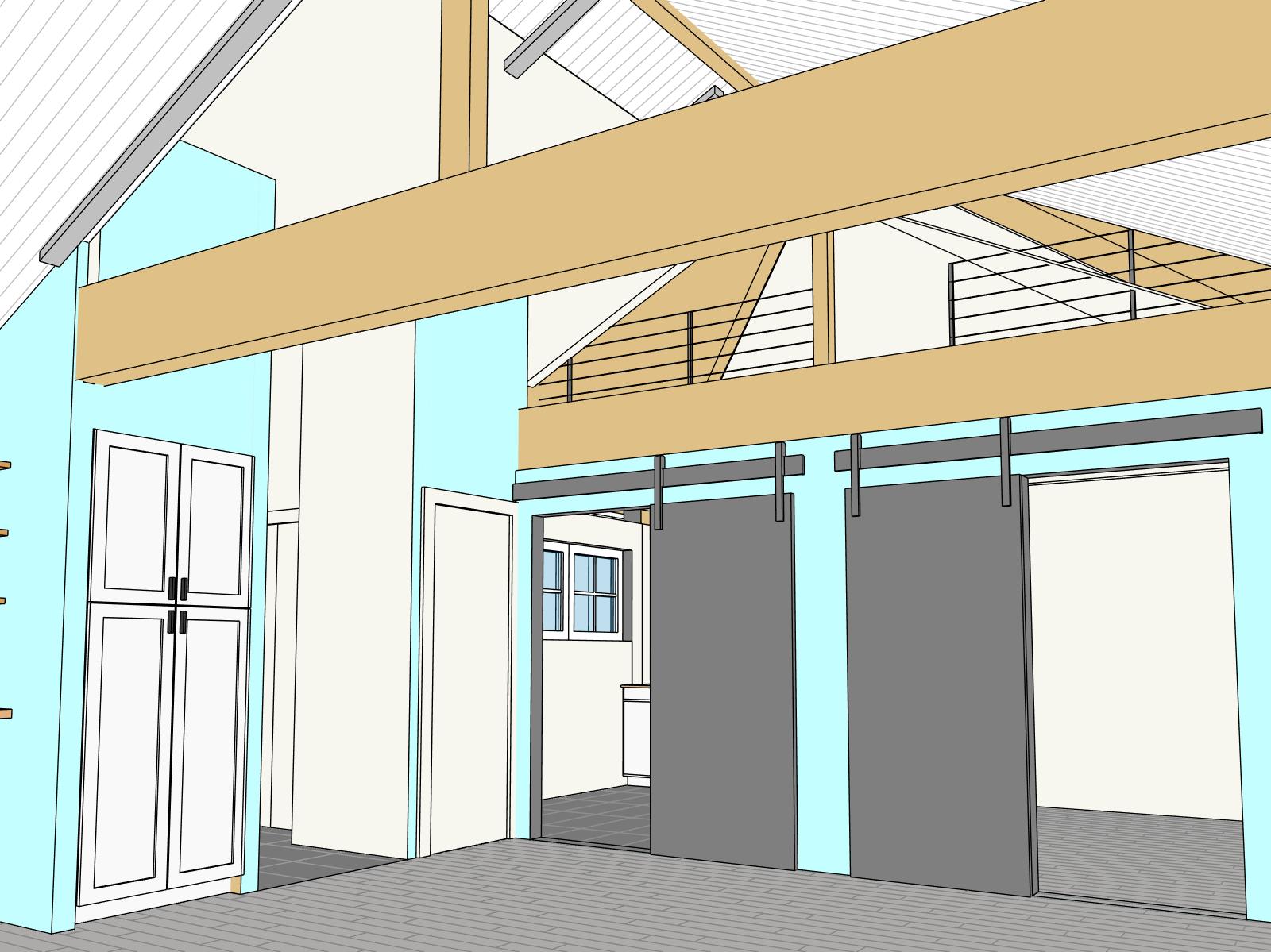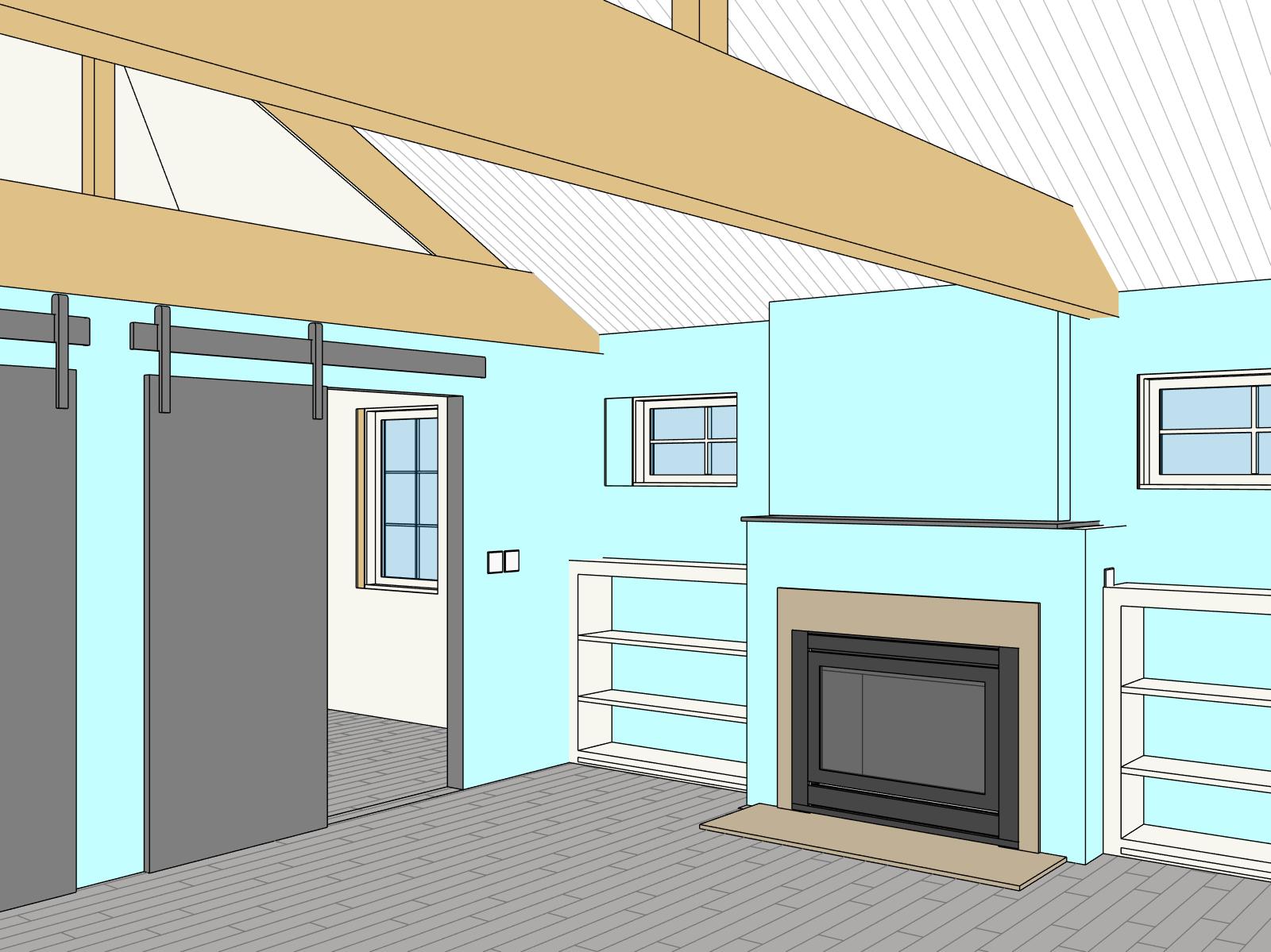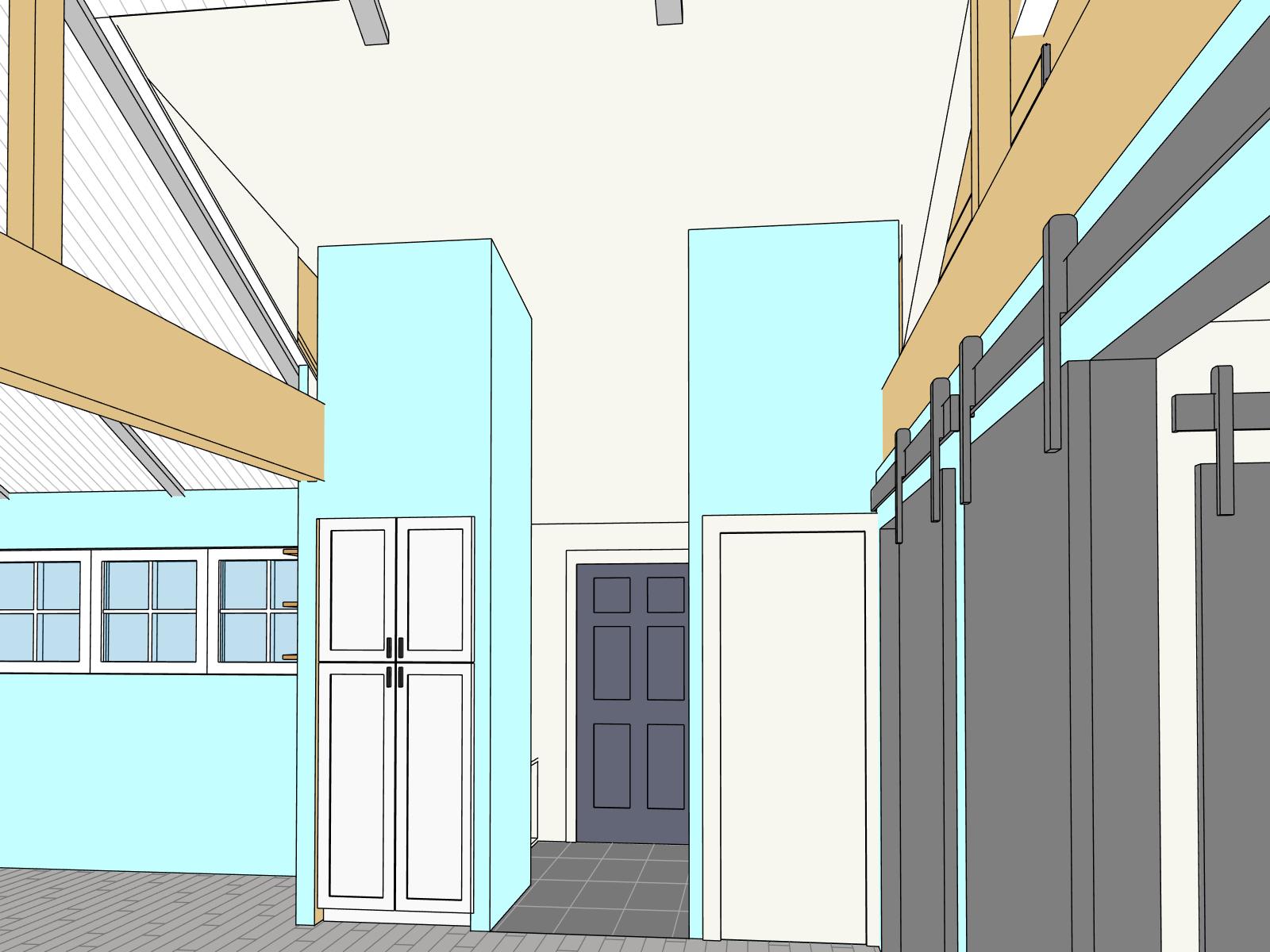Throughout your home renovation project your architect should be able to provide you with 3D floor plans and other 3D images of the design. These are incredibly helpful for all involved, especially at the preliminary design stage. However, to receive permits and to have your project built, you will need a comprehensive set of construction documents. There is a lot of information that needs to be conveyed and the bulk of this information gets conveyed in plans, sections and elevations. These are 2d drawings that are packed with information, and many people have difficulty understanding how to read these drawings.
This post will cover how to read your floor plans. Floor plans are presented as a view from above looking down at the floor. It is assumed that the plan is “cut” at about 48” above the floor.
The primary goal of the floor plan is to provide information about the location and relationship of the spaces you want to be built. We define these relationships by locating walls, doors, windows and other items. One of the key elements of reading your floor plan is to identify the dimension strings. These sets of dimensions give instructions about where to place walls and how thick those walls are. There will usually be multiple strings of dimensions next to each other, as it helps to separate things like the location of windows from the overall dimensions.
Another important feature in floor plans are plain language text notes. These are brief explanations of something to which the architect wants to draw attention. Text notes are used to point out existing items, atypical conditions or special instructions to the builder.
In addition to dimensions and notes there are often special symbols on a plan that direct your attention to another drawing or a schedule. Marks near windows and doors, often a single letter or a few numbers, indicate the type of window or door. This mark will match a line on schedule, which is a spreadsheet containing additional information. For example, if you see a “B” in a hexagon next to a window you can refer to the window schedule to see that window “B” is 36” wide and 72” tall and is made of wood, etc. Some other symbols found on plans include section and elevation markers. These drawings provide information about the vertical separation between spaces, exterior siding, roof pitches, etc, that can’t be shown on a floor plan. Floor plans will have references to these drawings though, so you can understand where those drawings are in the context of your design. A section marker is usually a circle with an arrow, and a sequence of numbers explaining which page the drawing is on.
Did you have any specific questions that weren't covered here? Leave a comment or send us an email. Check back soon for how to read your sections and elevations!






